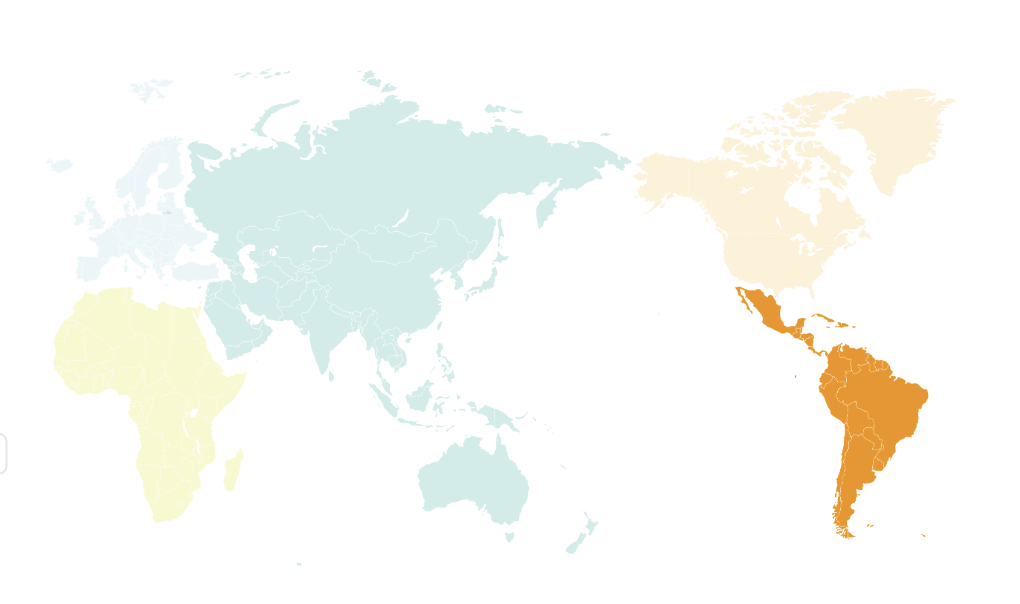Main Theme
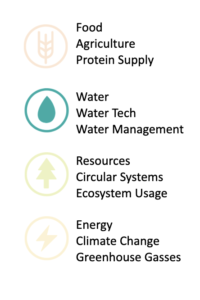
Sub-theme: Clean water, Circular Economy, From waste to food.
Abstract
Fish consumption is increasing worldwide, and it does not seem to decrease or slow down any time soon. Humanity can frequently notice how massive goods productions result in an environmental crisis because of the waste these intensive models produce and release into the environment. Fisheries are not an exception.
Freshwater aquaculture is one of the fish production models and consists of water tanks where fish live and grow. These water tanks have to be constantly refilled with clean water, and the dirty one goes to waste. Many extensive aquaculture facilities have cleaning water technologies. However, these are expensive technologies for medium and small businesses. For this reason, a group of women in Mexico decided to explore how cleaning water solutions can arrive at this target.
The answer was a plant-based technology inspired by nature’s way of solving problems: MicroTERRA. This innovation was developed twice, one using microalgae and the second one using the Lemna plant. Both proposals considered a circular business model as the core. The microalgae and Lemna act as the purifying system while transforming fish manure and excedent minerals in water to protein, which can be transformed into animal food, increasing up to 25% of the farmer’s earnings.
MicroTERRA’s business model was affected by the COVID19 pandemic. Their markets’ needs changed, and the first solution based on microalgae, even if it worked, was still expensive and difficult to get for their target due to the pandemic’s effect on the economy and businesses. However, MicroTERRA’s team developed a more accessible and cheaper solution, incorporating the Lemna plant in fish tanks, reducing infrastructure, and thus, prices.
Sustainable Development Goals Chart

Main Highlights
Problem
- Fish production demands high freshwater consumption, which is contaminated and then released into the environment.
- This water has high levels of phosphorus and nitrogen, and animal manure, which contaminates the soil and other water affluents.
Context
- Fish consumption has been increasing over the years, and the demand does not seem to stop or decrease.
- More sustainable ways of fish production must be found, but also more affordable technologies so that small producers can implement them.
Solution
- MicroTERRA is a Mexican startup that created two different approaches to solve this problem, one based on microalgae and the other based on a plant called Lemna.
- The first solution (based on microalgae) worked well, but the COVID-19 pandemic made it incompatible with the market’s need.
- The Lemna-based solution reduced the price of the technology and maintained the benefits and positive impact.
Impact Statement
- This solution can increase up to 25% of the farmer’s earnings.
- MicroTERRA impacts water availability, water purification, animal food protein production, farmer’s income, and sustainable pisciculture, all in one solution.
Systems perspective
- It transforms a linear business approach into a circular business model. As a result, more than one product comes from the same activity, helping the farmer save money and generate extra income.
- MicroTERRA is an example of an adaptable living system, given how it has adapted to the pandemic’s impacts.
Case Overview
Fish demand around the world has been increasing during the last few years. According to the FAO, global fish production for human consumption was approximately 156 million tonnes for 2018. There are Aquaculture and Capture fisheries to supply this demand, and both can be done in marine waters or inland waters. In the graph below, it is evident how those four practices have been increasing over the years.
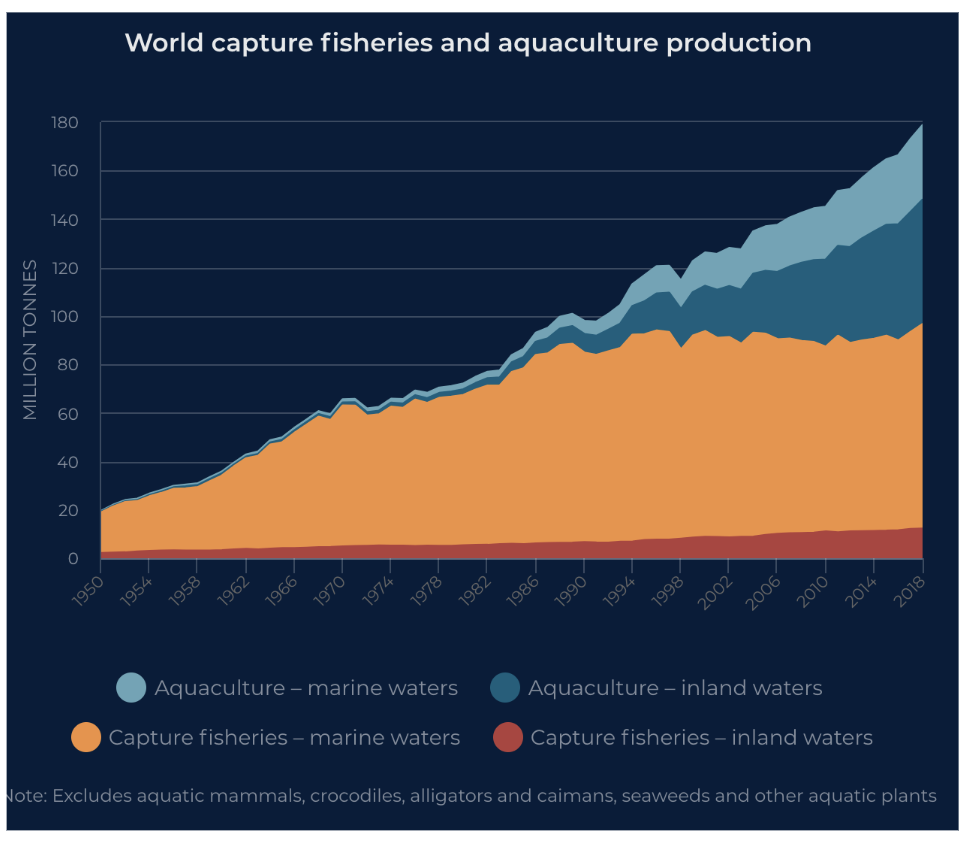
Picture: Fish production methods
- What does Aquaculture mean?
Aquaculture is the farming of aquatic animals, from fish to mollusks, and can be done in fresh or seawater. When done in freshwater, it usually consists of big tanks filled with water where fish are nurtured until they are ready to process. This industry needs lots of water because the tanks must be filled with oxygenated and clean water periodically (up to three times per week) for fish to grow and reproduce. Pisciculture is aquaculture focused on fish production.
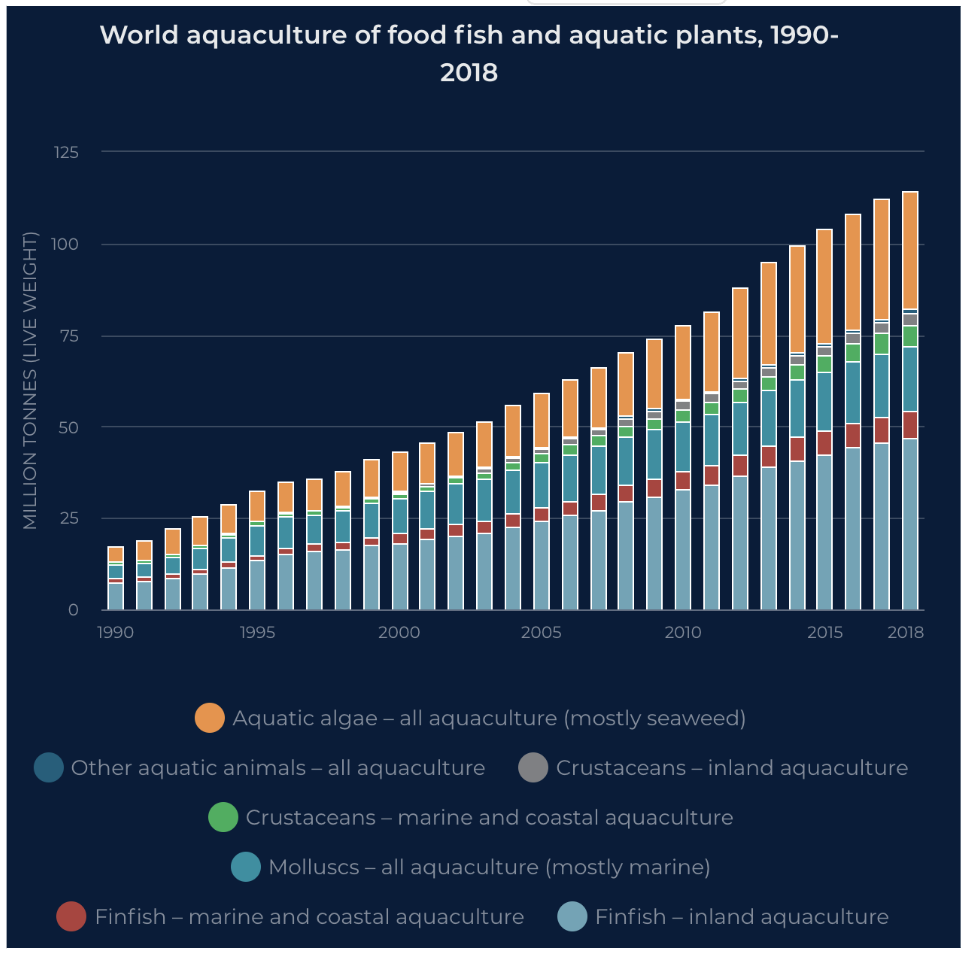
Picture: Different species produces in aquaculture.
- Agriculture and Pisciculture: A threat for water resources
Agriculture and Pisciculture are two activities that use a large amount of water, and at the same time, pollute this water, which ends up contaminating natural water affluents. This happens because of high nutrient concentrations like phosphorus and nitrogen due to fertilizers and animal manure. The process is called agricultural runoff, and it also applies to the polluted water that comes out from the fish nurturing.
- How to make pisciculture sustainable?
Marissa Cuevas, a Mexican Renewable Energy Engineer with a Master’s degree in Sustainability Management, wanted to rethink and redesign the pisciculture industry. She was conscious of the impact of this industry on water and agricultural runoff. Marissa first created a system back in 2018 that produced fertilizers from wastewater. However, she did not found a good market.
Later on, she found an opportunity when noticing all the nutrients that she could get from pisciculture wastewater and the fact that this water was already in containers with pipelines. Therefore, this new system she created could benefit from the current infrastructure, reducing costs, materials, and efforts. Additionally, she learned how the variability of fish food’s price was inconvenient for a pisciculture farmer. All these factors added up was the trigger for developing MicroTERRA.
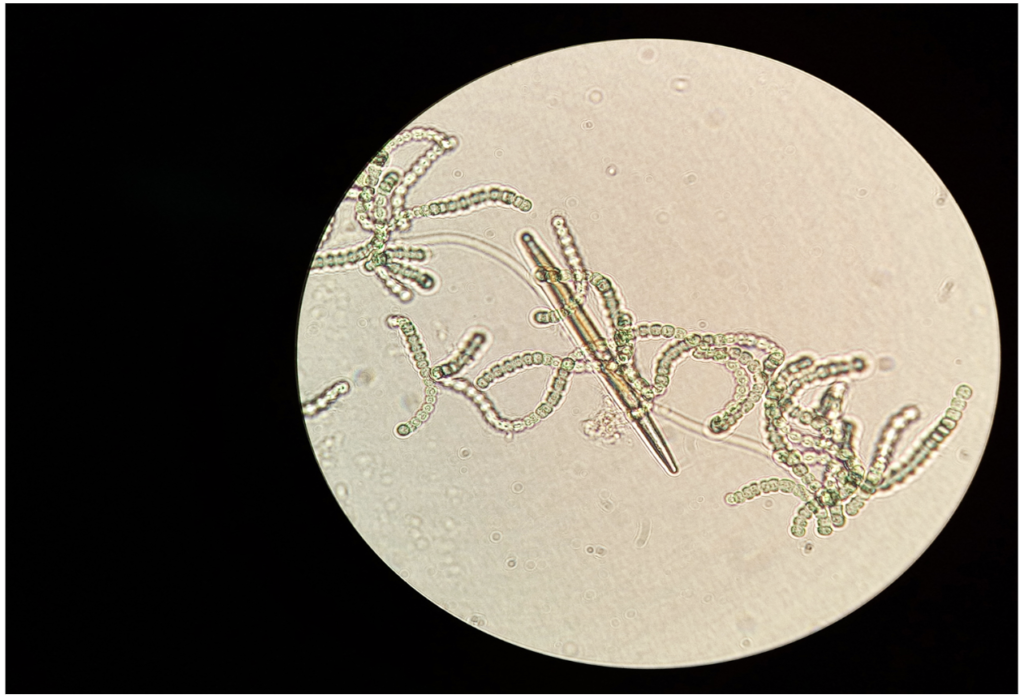
Picture: Microalgae used for purifying water.
MicroTERRA is Mexican entrepreneurship that developed an onsite microalgae-based technology that transforms wastewater from fish production into freshwater for the same activity and protein for fish food production.
This technology is composed of a bioreactor located in the existing fish tanks of the producers. Wastewater passes through the bioreactor, where microalgae are found. This microalga is stimulated with direct sunlight and starts eating and nurturing from fish manure, carbon dioxide, and excess nutrients like phosphorus or nitrogen in the water. The process takes three days to complete, and when it is done, the farmer has to separate water from microalgae. Then, water can be poured again into the fish tank, while the biomass that remains in the tank is collected and processed to extract the protein. The system is complemented with sensors, so technicians can monitor the state of the purifying water modules remotely and communicate with the farmers if actions must be taken (for example, open a valve for water to circulate or adjust the PH).
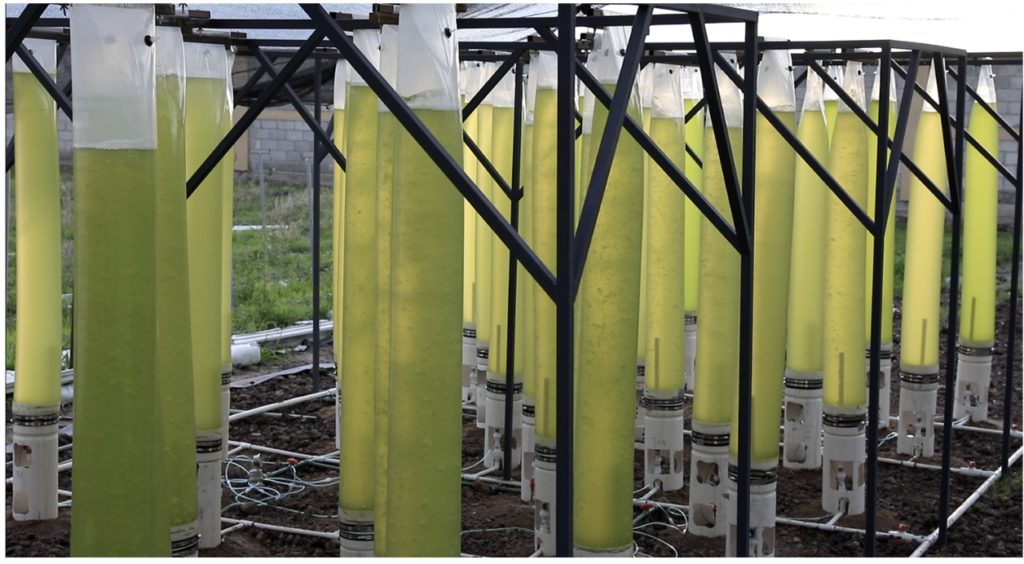
Picture: MicroTERRA First 5.000 liter pilot in a Tilapia pisciculture farm in Irapauto, Mexico.
- Project scope
Currently, the bioreactor can clean 5,000 litres of water every three days and produces about 38 kg of biomass monthly, but the scope is to develop one system that can treat 500,000 litres per day. The second scope is to reduce the three-day process.
The main target is mid-size fish producers because they are not big enough to pay for water treatment systems: with this specific system, they can reduce fish food and protein expenses. MicroTERRA creators say that the intention is to provide a product that is so cost-efficient that it pays for itself thanks to the economic return of clean water and protein production.
- Pandemic impacts on MicroTERRA
With the Covid-19 Pandemic, the MicroTERRA team was hit hard. Their newly realized product was not something the market wanted to buy due to the change in investment and money placement priorities. For this reason, the team began new tests and new options that would help reduce the price and increase the benefits, making a viable market product in a world that had an abrupt behavioral change.
The problem was still the same, water contamination due to agricultural runoff and animal manure. However, the solution needed to change. After research and development, the team found a solution easier to implement based on a plant called Lemna instead of microalgae. This plant needed less infrastructure, representing fewer costs for the farmers who wanted to implement the solution. This tiny plant reproduces quickly on the water surface, feeding on nutrients found in water and cleaning the water. There is no more wastewater to be discharged by cleaning the water, and no extra water is needed to change the polluted one. Additionally, it contains 45% protein, which is transformed into animal food. This solution does not need extra infrastructure or water treatment systems. It simplifies the process and reduces costs, still generating the same impact in the main problem and protein production, representing additional incomes for farmers.
The microalgae solution is not out of the picture. It works and generates a positive impact. The problem is that it wasn’t aligned with the market in a post-pandemic world because it represented a higher investment.
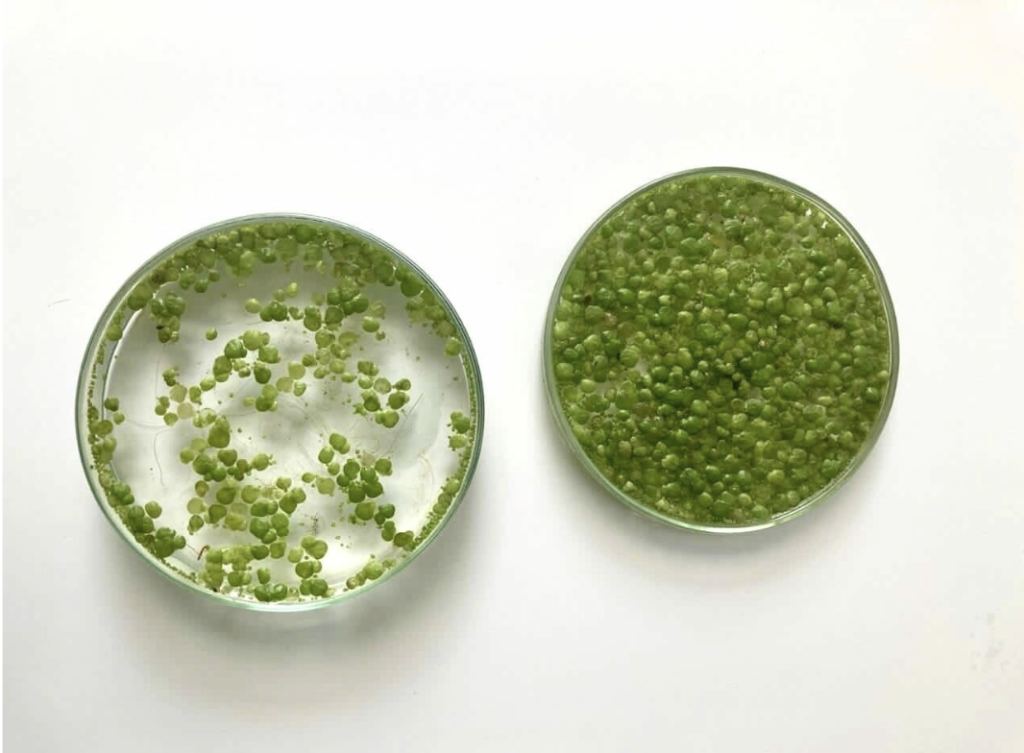
Picture: Lemna, the second attempt of MicroTERRA.
Impact Statement
Water purifying systems for pisciculture is not something new in the world. Big industries have applied expensive and complex technologies that result in the reuse of water from the fish tanks, in the same activity, saving tons of water and avoiding producing tons of contaminated water. However, these solutions are not always an option for middle and small size fish industries and farmers. In some developing regions, like Latin America, there can be many small pisciculture facilities, called rural pisciculture.
Innovations like MicroTERRA target precisely this kind of small fish producer. This project impacts them directly because of the extra income generated by selling the protein created from the plant system. This can increase up to 25% of their earnings while producing animal food based on a sustainable business model.
MicroTERRA has a significant impact on the environment, saving aquatic ecosystems by purifying water that before would have ended poured in nature as agricultural runoff water. At the same time, there is less water consumption since the water used in the fish tanks is being used cyclically.
Another effect is the high-quality protein made from Lemna, which will end up feeding animals sustainably. This new protein competes directly with other proteins created from unsustainable practices.
Finally, more people can start adapting their fish industries into a sustainable approach by creating an easy to handle and economically attractive offer of a sustainable pisciculture system. Massification of sustainable solutions is a reality when more people can afford the solutions that are in the market.
Systems Perspective
When discussing a solution that works to solve one of the main problems of today’s world, it is common to find out how it also impacts one or more of the other problems. For example, MicoTERRA was born as an initiative that wanted to reduce water pollution in pisciculture activity. However, today it is a solution that makes circular economy part of their business model.
Both microalgae and Lemna plant-based projects diversify the impact and benefits for the farmers that implement it. Both take contaminated water, treat it with plants existing in the environment, feed on compounds found in fish tanks, and transform it into protein. In addition, the Lemna system makes animal food from it.
This second revenue stream is also a motivation for fish producers to implement sustainable options in their industry. If not motivated by the environmental impacts, farmers can be inspired by the circular business model. Something that was first perceived as waste is now part of their product brochure, thus, of their incomes.
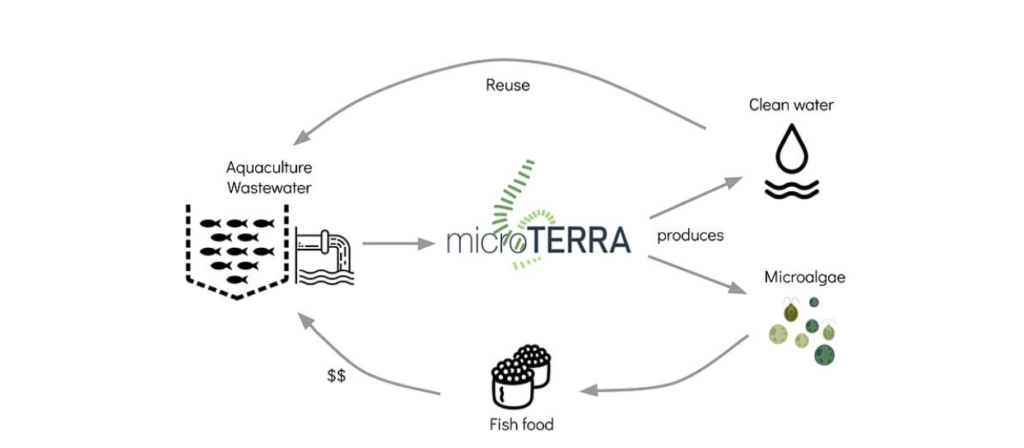
Picture 1: MicroTERRA Systemic model (first product based on microalgae)
Adapting to a changing world and adverse situations, as they did with the COVID-19 pandemic, is also systemic. Nature teaches us to react to the new barriers, and the MicroTERRA team had to act like nature in this situation by observing it.
Even if the microalgae solution was tested and working, the economic reality was not coherent to the project. Although microalgae could transform nutrients and animal manure into something valuable, like protein, they studied all the factors, including the context reality, finding a second plant that needed less infrastructure, representing fewer costs for the farmers who wanted to implement the solution.
Why is this systemic? Because a system is a series of interconnected elements interacting with each other, with the capability to adapt to new circumstances, even when one of the parts is missing.
Links and Contact Information
MicroTERRA Website
https://www.microterra.com/the-problem
MicroTERRA LinkedIn
https://www.linkedin.com/company/microterramx/
MicroTERRA Video Pitch
FAO State of Fisheries and Aquaculture 2020
Case by: 4Revs Researcher Sara Gómez Gómez | September 2021

